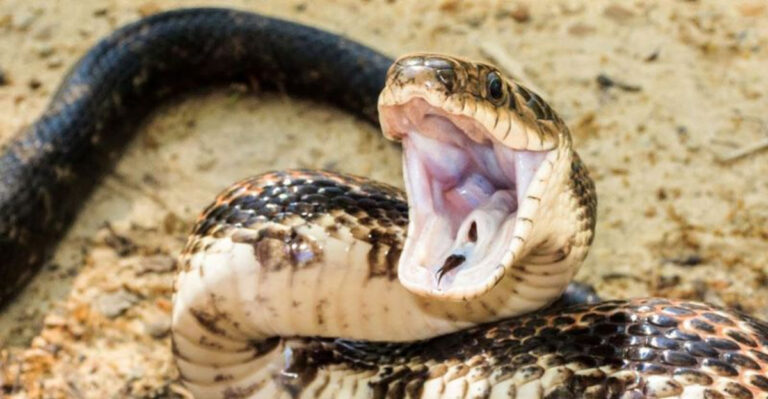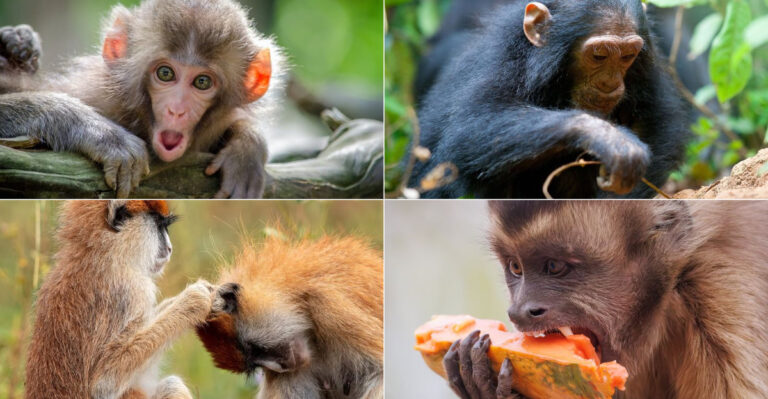Meet The 15 Weirdest Snakes Found In The U.S.
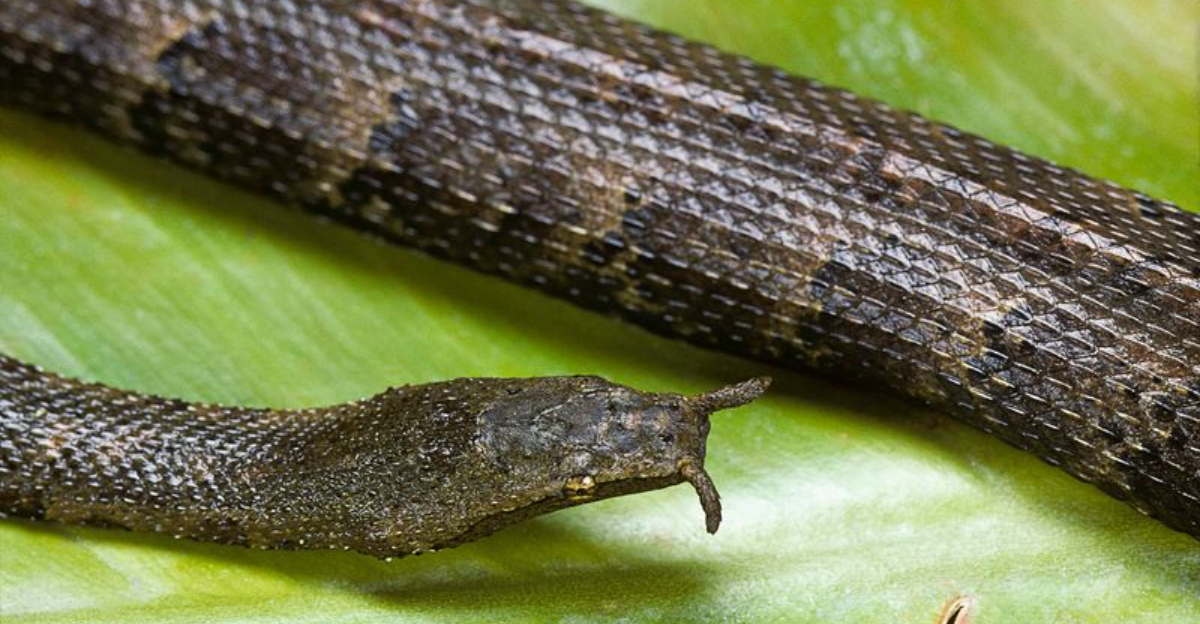
Slithering beneath rocks and hiding in tall grass, America’s snake population is far more diverse than most people realize.
While many of us might recognize common species like rattlesnakes or garter snakes, the United States is home to some truly bizarre serpents that seem straight out of a fantasy novel.
From snakes that play dead to those with unique hunting tactics, these slithery creatures showcase nature’s incredible creativity.
1. Eastern Hognose Snake – The Drama Queen
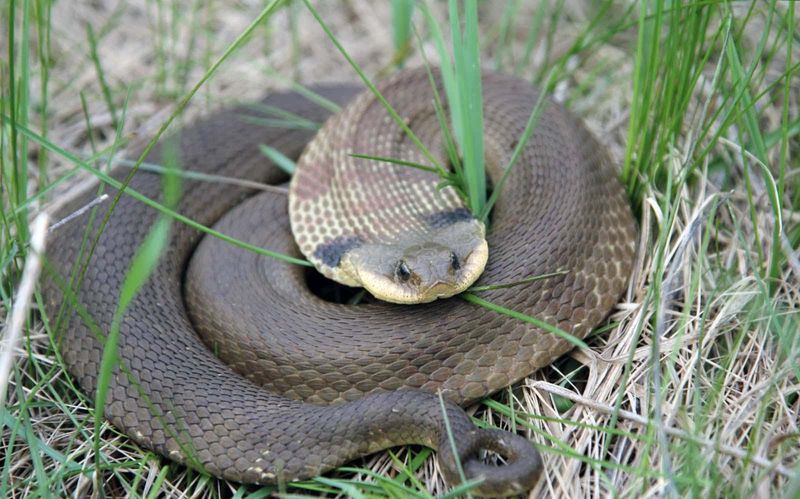
When threatened, this theatrical reptile puts on a performance worthy of Broadway. First, it flattens its neck like a cobra and hisses loudly. If that doesn’t scare off predators, it rolls onto its back, tongue hanging out, playing dead so convincingly that it even emits a foul smell!
The hognose gets its name from its upturned snout, which it uses like a tiny shovel to dig through soil hunting for toads. Despite their intimidating display, these snakes are harmless to humans.
Their bizarre behavior has earned them nicknames like “puff adder” and “spreading adder” even though they’re not related to true adders at all.
2. Rubber Boa – The Two-Headed Trickster
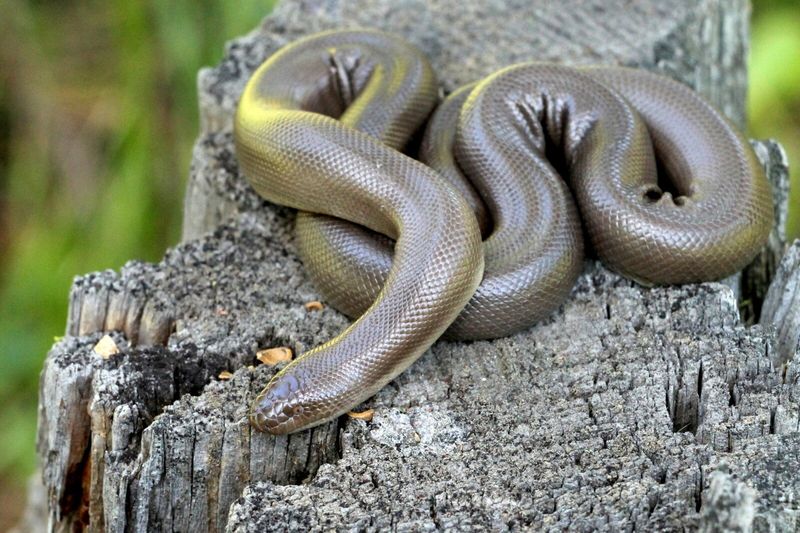
Resembling a child’s rubber toy, this small, stocky snake has a blunt tail that looks remarkably similar to its head. When threatened, it curls into a ball and waves its tail to confuse predators about which end to attack.
The rubber boa feels rubbery to touch and moves with slow, deliberate motions unlike most snakes. These gentle creatures are one of the most northerly boa species, surviving in cool mountain regions where other boas couldn’t survive.
They’re exceptional burrowers that spend most of their lives underground hunting nestling mice and shrews, sometimes even stealing entire litters while parent rodents are away.
3. Ring-necked Snake – The Secret Glower
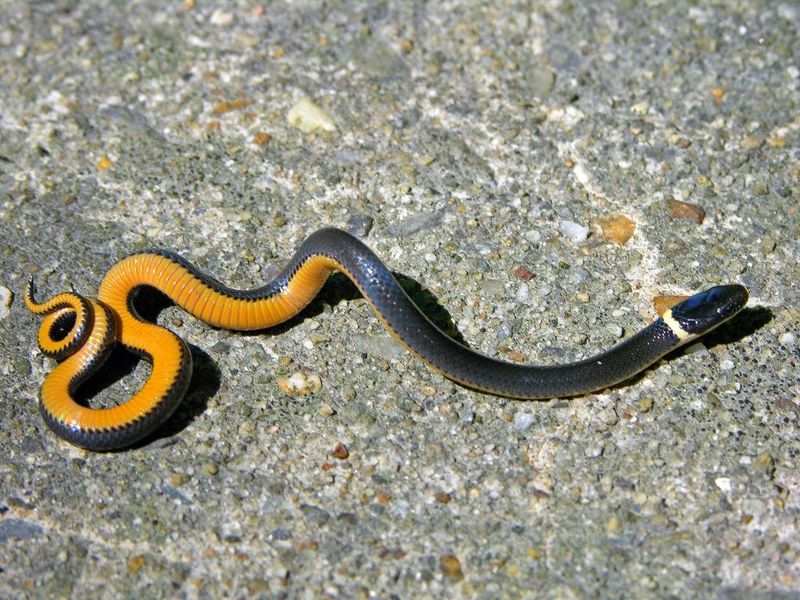
By day, this small snake appears modest with its bluish-black back and signature yellow-orange ring around its neck. But flip one over, and you’ll discover its shocking secret – a brilliantly colored belly in vivid yellow, orange, or red!
When threatened, ring-necked snakes curl their tails, exposing their bright undersides. Scientists believe this serves as a warning signal to predators, similar to how poison dart frogs use bright colors.
Despite being mildly venomous, these tiny snakes (rarely exceeding 15 inches) pose no threat to humans. Their specialized venom is designed for their favorite prey – salamanders and worms, which they subdue by constriction before envenomating.
4. Brahminy Blind Snake – The Living Earthworm
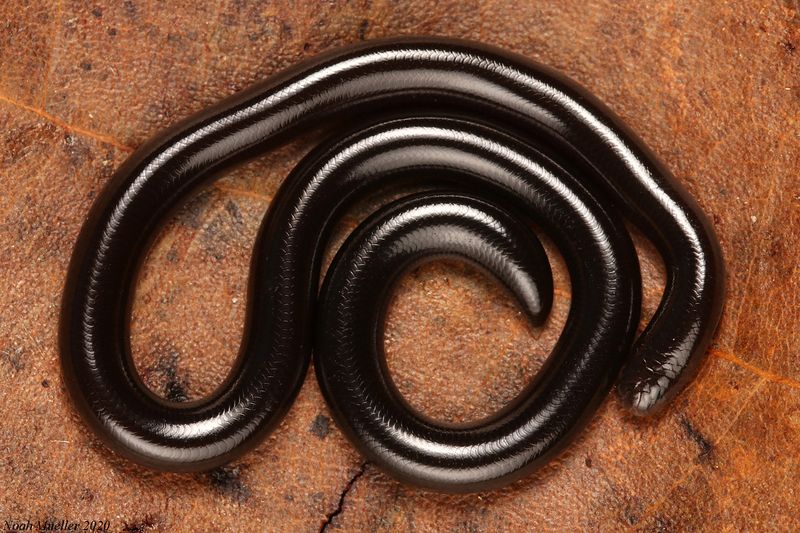
Often mistaken for an earthworm, this pencil-thin snake is among the world’s smallest serpents. Growing only 6-8 inches long with a body width similar to spaghetti, these bizarre creatures have vestigial eyes covered by scales, rendering them nearly blind.
Unlike typical snakes, they don’t have expandable jaws. Instead, they feed exclusively on ant and termite larvae, eggs, and pupae, making them beneficial pest controllers around homes.
All Brahminy blind snakes in America are female! They reproduce through parthenogenesis – essentially cloning themselves without needing males, which explains how a single snake released from the pet trade colonized much of the southern United States.
5. Scarlet Snake – The Coral Copycat
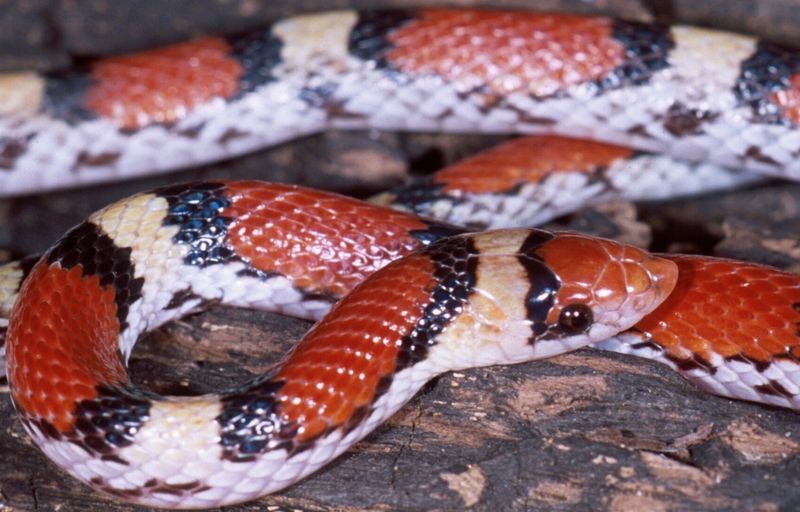
Mother Nature’s master of disguise, the scarlet snake mimics the deadly coral snake with its striking red, black, and yellow bands. The key difference? The arrangement of these bands – a distinction captured in the old saying: “Red touch black, friend of Jack; red touch yellow, kill a fellow.”
Unlike their venomous lookalikes, scarlet snakes are harmless constrictors that specialize in raiding reptile eggs. They’ve developed an unusual egg-eating technique where they crush eggs against their spines from inside their throat!
Secretive by nature, these snakes spend most of their lives underground, making them one of the least-studied snakes despite their brilliant coloration.
6. Desert Threadsnake – The Living Needle
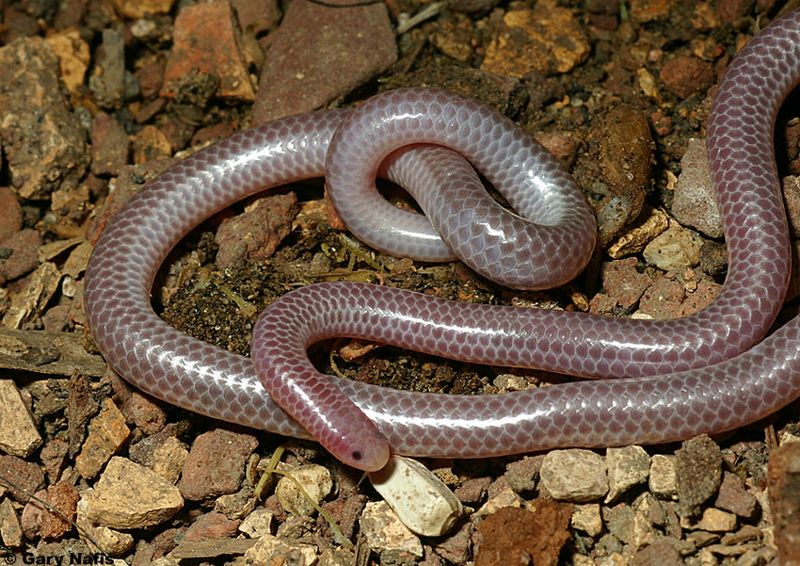
Thinner than a strand of spaghetti and rarely longer than 8 inches, the desert threadsnake holds the title of America’s tiniest snake. Their eyes are so reduced they appear as mere dots, and their mouths are so small they can only eat ant and termite larvae.
These bizarre mini-serpents spend nearly their entire lives underground, creating tiny tunnels through loose soil. They’re so specialized for subterranean life that they can’t move effectively on the surface and quickly dry out if exposed to air for too long.
A fascinating adaptation: their polished scales allow them to move backward through tunnels just as easily as forward – a rare ability among snakes!
7. Tentacled Snake – The Underwater Ambusher
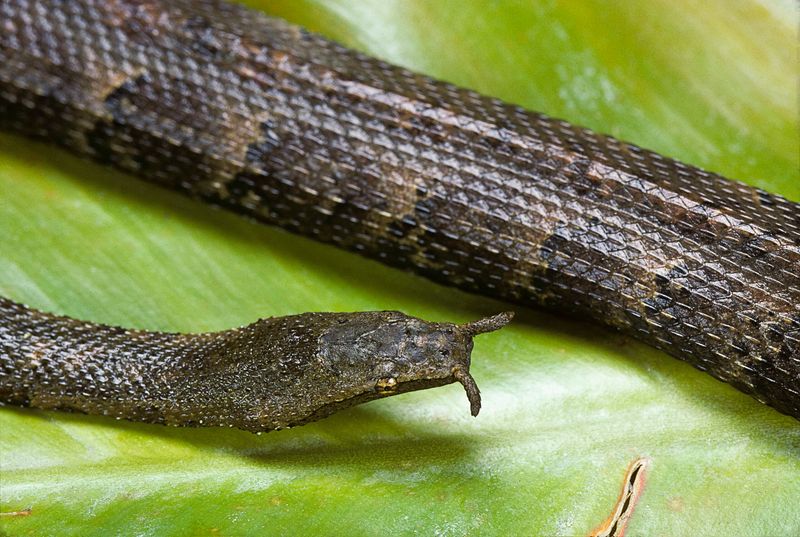
Looking like something from a sci-fi movie, the tentacled snake sports two bizarre tentacle-like protrusions on its snout. These specialized scales help detect movement in water as the snake remains perfectly still, waiting for prey.
Fully aquatic, these snakes never leave the water and have developed one of the fastest strike speeds in the animal kingdom. They create a ripple in the water that causes fish to swim directly into their mouths!
While native to Southeast Asia, these oddities have established populations in Florida due to the exotic pet trade, making them one of America’s weirdest adopted snake species.
8. Mud Snake – The Spike-Tailed Specialist
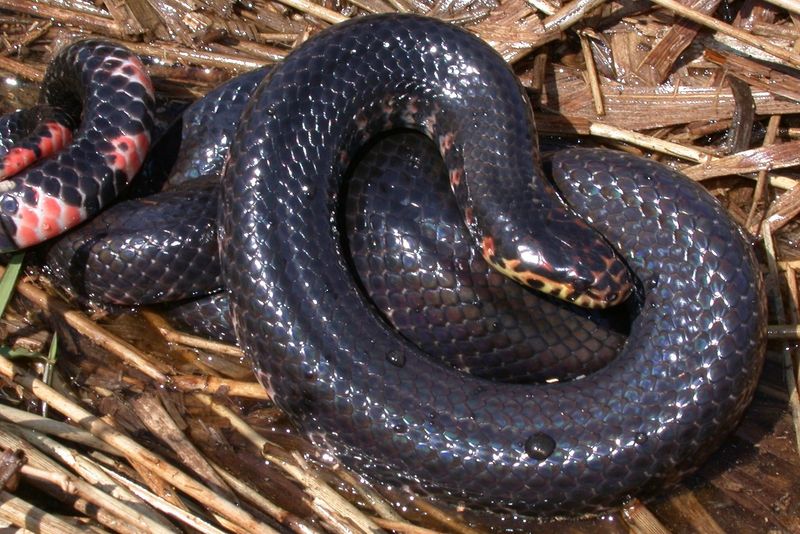
Sporting a glossy black top and a stunning checkerboard pattern of red and black on its belly, the mud snake is a fashion statement in the reptile world. But its most bizarre feature is the sharp spine at the tip of its tail, which it uses to prod and secure slippery prey like salamanders and amphiumas.
These aquatic specialists can hold their breath underwater for remarkable periods, hunting in murky swamps where few other snakes venture. Despite their formidable appearance, mud snakes are incredibly docile – they rarely bite even when handled.
Their specialized diet makes them nearly impossible to keep in captivity, as they primarily eat giant salamanders that few people can provide.
9. Rosy Boa – The Backwards Hunter
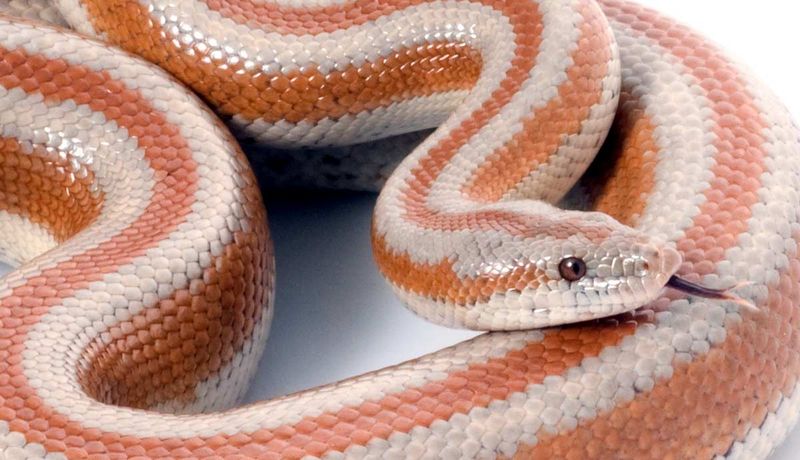
Unlike most snakes that strike forward with lightning speed, the rosy boa employs a bizarre hunting strategy – it strikes backward! When a mouse approaches from behind, this snake can launch a reverse attack without turning around, a skill few other snakes possess.
With their chunky bodies and three longitudinal stripes running the length of their bodies, rosy boas resemble living rainbows in desert colors. They’re among the few snakes that give live birth rather than laying eggs.
Perhaps their strangest trait is their defensive mechanism – when threatened, they tie themselves into a tight ball with their head protected in the center, looking more like a colorful donut than a dangerous predator.
10. Rough Earth Snake – The Invisible Gardener
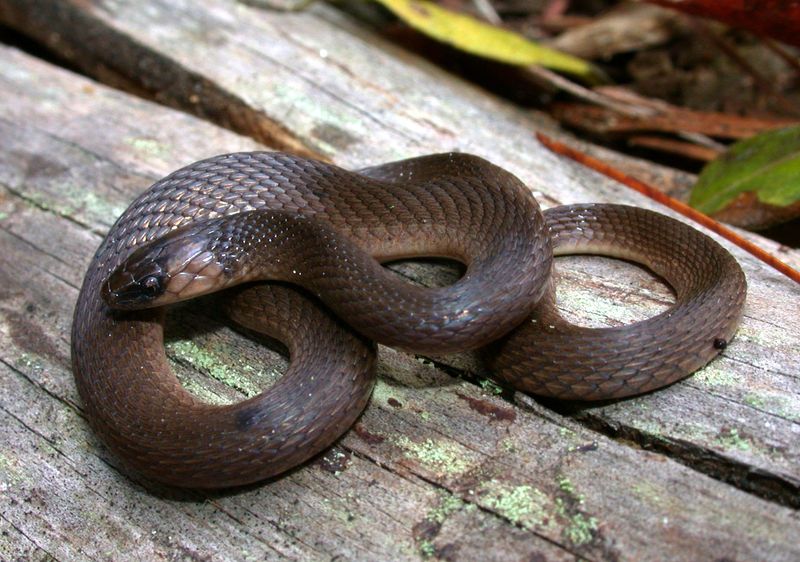
No larger than a pencil and colored like soil, rough earth snakes are the gardener’s unseen helpers. These tiny brown serpents spend their lives beneath mulch and leaf litter, consuming slugs and earthworms that would otherwise damage plants.
What makes them truly odd is their complete lack of scales under their chin – a feature found in virtually all other snakes. This adaptation helps them slide through tight spaces in compacted soil.
Despite living throughout the southeastern United States, most people have never seen one. They’re so secretive that when discovered, they freeze rather than flee, relying on camouflage rather than speed – a strategy that works perfectly until someone picks up their garden pot!
11. Sonoran Shovel-nosed Snake – The Sand Swimmer
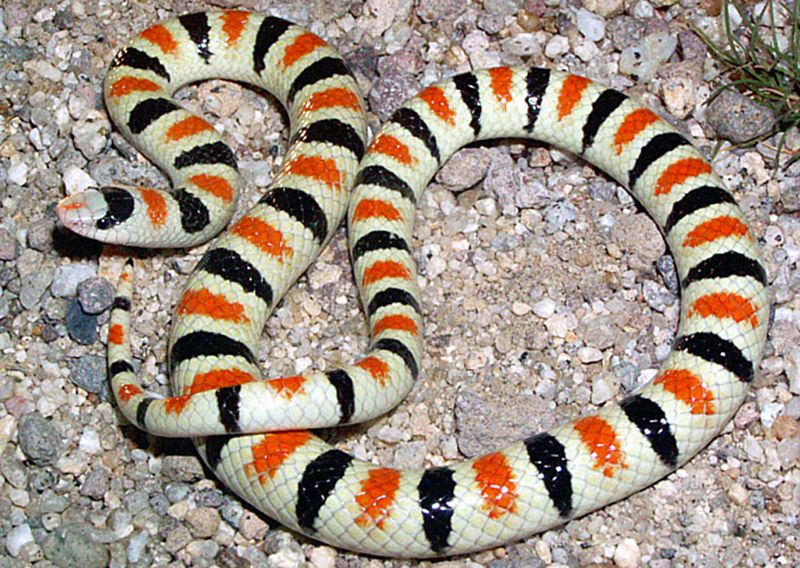
Imagine a snake that swims through sand as easily as fish through water. The Sonoran shovel-nosed snake has evolved a flattened, wedge-shaped snout that works like a tiny bulldozer, allowing it to dive beneath desert sand in seconds.
Their bodies are decorated with striking black and red bands separated by cream-colored spaces – a pattern that glows under ultraviolet light! Scientists believe this adaptation helps them navigate during moonlit nights when they’re most active.
Perhaps their oddest feature is their specialized lungs. One lung is significantly reduced in size, allowing their organs to be arranged in a streamlined fashion perfect for underground movement without getting sand in their respiratory system.
12. California Mountain Kingsnake – The Triple Impersonator
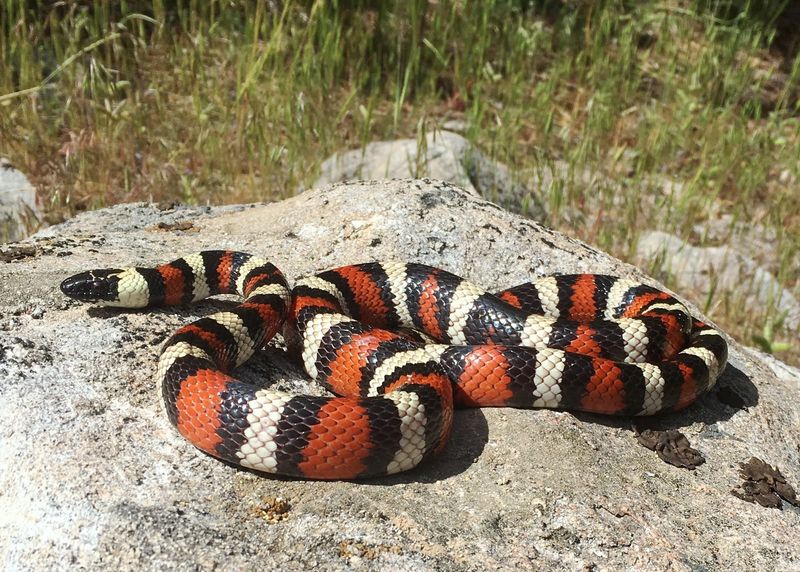
Master of triple deception, this non-venomous snake mimics not one but two deadly serpents – both coral snakes and Arizona mountain kingsnakes! With vibrant bands of red, black, and white encircling its body, predators can’t tell if they’re facing a harmless impersonator or a lethal biter.
Their bizarre feeding habit sets them apart from other snakes. They’re ophiophagous – meaning they eat other snakes, including venomous rattlesnakes! Somehow they’ve developed immunity to venom that would kill most creatures.
Living at higher elevations than almost any other North American snake, they’ve adapted to survive long, cold winters by entering a hibernation-like state for up to six months of the year in rock crevices.
13. Eastern Indigo Snake – The Snake-Eating Giant
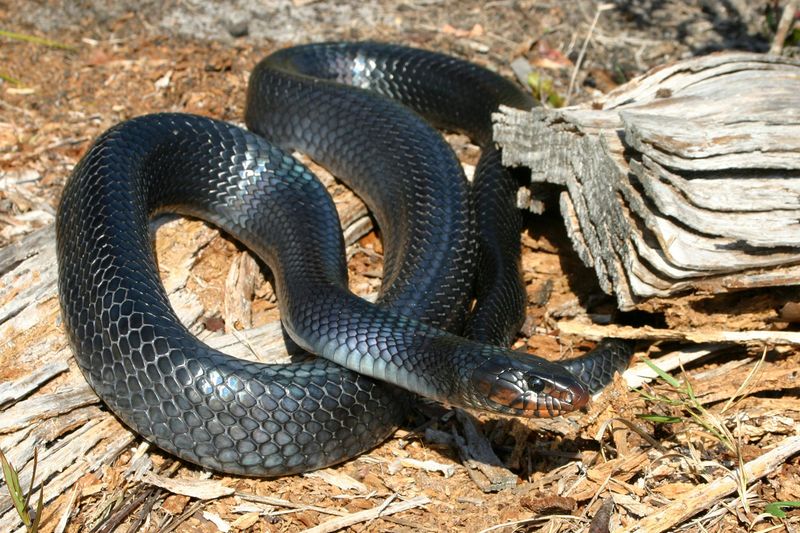
Reaching lengths of over 8 feet, the eastern indigo is America’s longest native snake. What makes it truly weird is its color – a shimmering blue-black that appears to change hues in different lighting, giving it an almost supernatural appearance.
These giants have a peculiar diet preference: other snakes, including venomous rattlesnakes! They’re immune to rattlesnake venom and will eagerly consume these dangerous reptiles head-first.
Unlike most snakes that flee from humans, indigos often stand their ground when confronted. They raise their heads off the ground and make a strange coughing sound – a bizarre warning display that earned them the nickname “blow snake” among early settlers.
14. Night Snake – The False Rattler
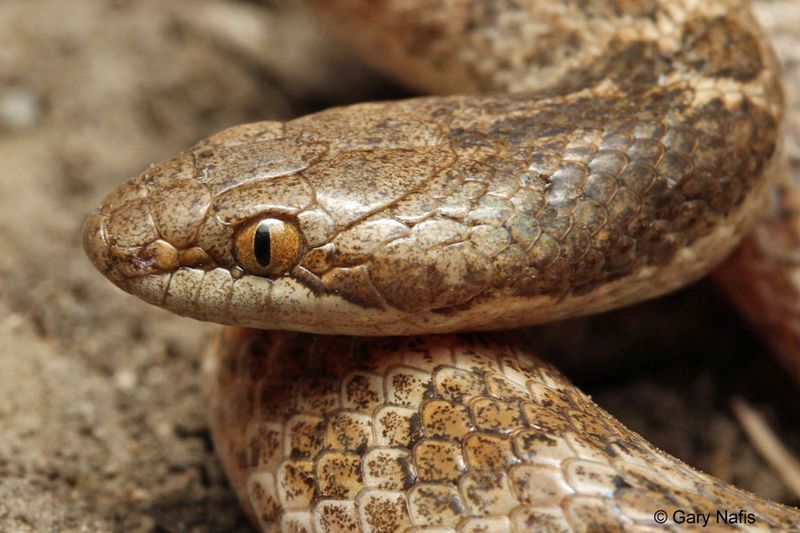
With vertical pupils and flattened, triangular heads, night snakes are often mistaken for deadly pit vipers. While mildly venomous, their bizarre adaptation isn’t their toxin but their hunting technique – they track prey using scent and heat-sensing abilities similar to rattlesnakes.
These masters of mimicry vibrate their tails against dry leaves when threatened, creating a convincing rattlesnake sound without having rattles! Their specialized rear fangs deliver venom only when they chew, making them harmless during defensive bites.
Most strangely, night snakes have evolved independently from other rear-fanged snakes, developing similar venom delivery systems through convergent evolution – nature’s way of arriving at the same solution from different starting points.
15. Smooth Green Snake – The Living Vine
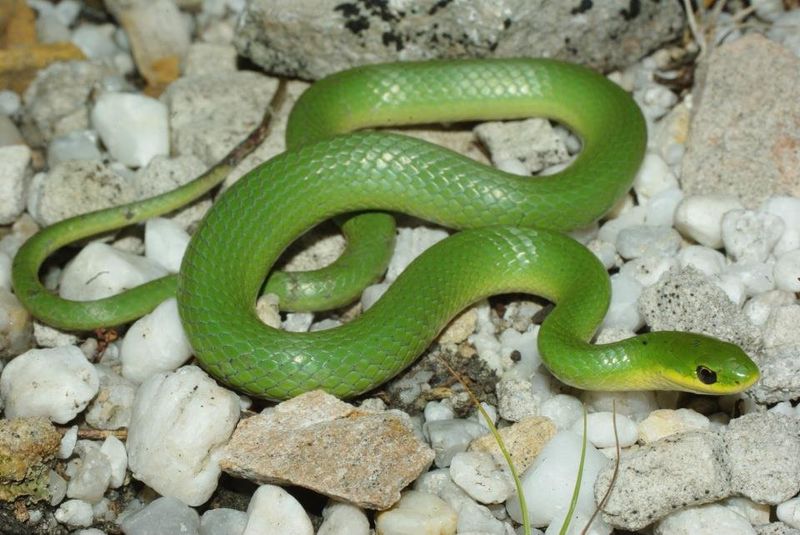
Bright green and pencil-thin, smooth green snakes are so perfectly camouflaged among grass and leaves that they seem to disappear before your eyes. Unlike most snakes that rely on heat or movement to hunt, these oddities have exceptional color vision that helps them spot colorful insects.
Their strangest feature is their diet – they’re among the few snakes that eat primarily insects rather than vertebrates. Their specialized jaws and teeth are adapted for catching crickets, caterpillars, and spiders instead of mice or frogs.
Perhaps most bizarre, when they die, their bright green color transforms to turquoise blue due to a chemical reaction between their yellow skin pigments and the atmosphere – a final weird trick from this unusual serpent.




